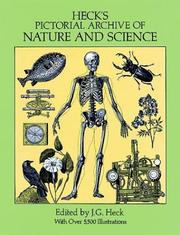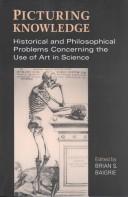| Listing 1 - 10 of 37 | << page >> |
Sort by
|
Book
Year: 2015 Publisher: Bruxelles : Éditions de l'Université de Bruxelles,
Abstract | Keywords | Export | Availability | Bookmark
 Loading...
Loading...Choose an application
- Reference Manager
- EndNote
- RefWorks (Direct export to RefWorks)
Ce numéro consacré à l'écriture des sciences s'attache aux modalités de repérage, de description et de mise en ordre des productions de la nature, aux techniques d'argumentation, de représentation et d'ordonnancement des connaissances, aux échanges entre textes et images, aux stratégies de transmission, de diffusion et de transfert des savoirs.
Social surveys. --- Communication in science. --- Scientific illustration.
Book
ISBN: 9781939125835 1939125839 Year: 2023 Publisher: Rochester, New York RIT Press
Abstract | Keywords | Export | Availability | Bookmark
 Loading...
Loading...Choose an application
- Reference Manager
- EndNote
- RefWorks (Direct export to RefWorks)
"In the first monograph devoted to Herbert Bayer's famed 1953 World Geo-Graphic Atlas, Benjamin Benus explores the significance and enduring legacy of the former Bauhaus designer's landmark work of visual education. Drawing on extensive archival documentation, this book illuminates the historical relationships between modern art and scientific illustration in the mid-twentieth century, while assessing the Atlas's contributions to the emerging field of information design"--
Bayer, Herbert, --- Visual education --- Scientific illustration --- Cartography --- History
Book
ISBN: 9789004298866 9789004298873 9004298878 Year: 2018 Publisher: Leiden, Boston: Brill,
Abstract | Keywords | Export | Availability | Bookmark
 Loading...
Loading...Choose an application
- Reference Manager
- EndNote
- RefWorks (Direct export to RefWorks)
If any scientific object has over the course of human history aroused the fascination of both scientists and artists worldwide, it is beyond doubt the moon. The moon is also by far the most interesting celestial body when it comes to reflecting on the dualistic nature of photography as applied to the study of the universe. Against this background, Selene’s Two Faces sets out to look at the scientific purpose, aesthetic expression, and influence of early lunar drawings, maps and photographs, including spacecraft imaging. In its approach, Selene’s Two Faces is intermedial, intercultural and interdisciplinary. It brings together not only various media (photography, maps, engravings, lithographs, globes, texts), and cultures (from Europe, America and Asia), but also theoretical perspectives.
Solar system --- History --- scientific illustration [process] --- astronomy --- depictions [visual works] --- Maan --- Astronomy. --- Moon. --- Moon
Book
ISBN: 2856539017 2856535925 Year: 2019 Publisher: Paris : Publications scientifiques du Muséum,
Abstract | Keywords | Export | Availability | Bookmark
 Loading...
Loading...Choose an application
- Reference Manager
- EndNote
- RefWorks (Direct export to RefWorks)
Les archives des bibliothèques et des muséums à travers le monde sont pleines de trésors peu visibles et sous-évalués mais peu d’objets sont aussi délicats et inconnus que les peintures de poissons et invertébrés réalisées à la fin du xviie siècle par Isaac Johannes Lamotius sur la minuscule île Maurice dans l’océan Indien et aux Moluques. Seul et coupé de la vie intellectuelle hollandaise de l’époque, accablé par la tâche quasi impossible de gouverner une petite mais indisciplinée communauté de colons hollandais, Lamotius se consola en étudiant la faune et la flore alors inconnues de l’île. Durant son mandat et quelque temps après quand il fut exilé sur l’île de Rosengain dans l’archipel de Banda, il consacra ses temps libres à dessiner et peindre des animaux aquatiques, en particulier des poissons marins. Bien qu’il en produisit sans doute beaucoup plus, il ne reste plus aujourd’hui qu’un jeu de 250 planches en couleurs dont la totalité est reproduite pour la première fois dans le présent volume. Les planches révélées ici, conservées dans le fonds de la Bibliothèque centrale du Muséum national d’Histoire naturelle de Paris, ont été dévoilées par Georges Cuvier au début du XIXe siècle. Ce n’est qu’en 1959 que l’un des auteurs, procédant à une étude comparative détaillée de ces planches et d’autres jeux d’illustrations semblables sur lesquels s’appuyaient de nombreuses publications d’histoire naturelle du XVIIIe siècle, les identifia comme réalisées par Lamotius. Ces dessins sont largement supérieurs à tout ce qui se faisait à la même époque. Ils fournissent la première preuve de l’existence de beaucoup des espèces figurées, avec des données sur leur collecte ; la fidélité scientifique est telle que presque toutes ces espèces peuvent être aisément identifiées. Ensemble, ces planches constituent la description la plus ancienne connue de la faune marine de l’île Maurice et, en cela, une des plus anciennes études des poissons et invertébrés marins de tout…
Natural history illustration --- Lamotius, Isaac Johannes, --- Nature illustration --- Scientific illustration --- Lamoot, Isaac Johannes, --- Lamotius, I. J. --- Lamotte, Isaac Johannes, --- fish

ISBN: 0486282910 9780486282916 Year: 1994 Publisher: New York Dover Publications
Abstract | Keywords | Export | Availability | Bookmark
 Loading...
Loading...Choose an application
- Reference Manager
- EndNote
- RefWorks (Direct export to RefWorks)
Engraving --- Illustration of books --- Picture dictionaries --- Scientific illustration --- Handbooks, manuals, etc --- Handbooks, manuals, etc --- Handbooks, manuals, etc --- Handbooks, manuals, etc
Book
ISBN: 1282125311 9786612125317 0199708533 9780199708536 9780195369946 0195369947 0197707785 9781282125315 6612125314 Year: 2009 Publisher: Oxford ; New York : Oxford University Press,
Abstract | Keywords | Export | Availability | Bookmark
 Loading...
Loading...Choose an application
- Reference Manager
- EndNote
- RefWorks (Direct export to RefWorks)
""If you can't draw it, you don't know it:"" that was the rule of the late neuroanatomist William DeMyer, MD. Yet books do not encourage us to draw and redraw neuroanatomy. Neuroanatomy: Draw It to Know It teaches neuroanatomy through step-by-step instruction of how to draw neuroanatomical pathways and structures. Its instructive language is highly engaging. Users draw neuroanatomical structures and pathways in several steps so they are remembered and use mental and physical mnemonics to demonstrate difficult anatomical rotations and directional pathways. Anatomical pictures and radiographic i
Neuroanatomy --- Human anatomy. --- Anatomy, Human --- Anatomy --- Human biology --- Medical sciences --- Human body --- Nerves --- Nervous system --- Neurobiology --- Graphic methods. --- Medical illustration. --- Illustration, Medical --- Medicine and art --- Scientific illustration

ISBN: 128204558X 9786612045585 144267847X 9781442678477 9781282045583 080202985X 0802074391 9780802074393 9780802029850 144265435X Year: 1996 Publisher: Toronto
Abstract | Keywords | Export | Availability | Bookmark
 Loading...
Loading...Choose an application
- Reference Manager
- EndNote
- RefWorks (Direct export to RefWorks)
The traditional concept of scientific knowledge places a premium on thinking, not visualizing. Scientific illustrations are still generally regarded as devices that serve as heuristic aids when reasoning breaks down. When scientific illustration is not used in this disparaging sense as a linguistic aid, it is most often employed as a metaphor with no special visual content. What distinguishes pictorial devices as resources for doing science, and the special problems that are raised by the mere presence of visual elements in scientific treatises, tends to be overlooked. The contributors to this volume examine the historical and philosophical issues concerning the role that scientific illustration plays in the creation of scientific knowledge. They regard both text and picture as resources that scientists employ in their practical activities, their value as scientific resources deriving from their ability to convey information.
Scientific illustration --- Illustration, Scientific --- Science illustration --- Scientific literature --- Art and science --- Illustration of books --- Drawing --- Technical illustration --- History. --- Philosophy. --- Illustration --- Scientific applications
Book
ISBN: 0817392513 9780817392512 9780817320133 081732013X Year: 2019 Publisher: Tuscaloosa : The University of Alabama Press,
Abstract | Keywords | Export | Availability | Bookmark
 Loading...
Loading...Choose an application
- Reference Manager
- EndNote
- RefWorks (Direct export to RefWorks)
Science --- Natural history illustration --- Nature illustration --- Scientific illustration --- Natural science --- Natural sciences --- Science of science --- Sciences --- Economic aspects. --- History --- Abbot, John, --- Swainson, William, --- Swainson, W.
Book
ISBN: 9048554276 9789048554270 9463721061 9789463721066 Year: 2022 Publisher: Amsterdam
Abstract | Keywords | Export | Availability | Bookmark
 Loading...
Loading...Choose an application
- Reference Manager
- EndNote
- RefWorks (Direct export to RefWorks)
The book traces major concepts including: the creation of the visual effects of accuracy through careful action and training; the development of visual judgment and connoisseurship; the role of a network in the production of knowledge; balancing readers' expectations with representational conventions; and the effects of acts of collecting on the creation and circulation of knowledge. On the one hand, this study uncovers that approaches to knowledge production were different in the seventeenth century, as compared with in the twenty-first century. On the other, it reveals how the early modern struggle to sort through an overwhelming quantity of visual information - brought on by major changes in image production and circulation - resonates with our own.
Book
ISBN: 9780199556915 0199556911 0191744999 0191626066 1299409296 9780191626067 9780191744990 Year: 2013 Volume: *29 Publisher: Oxford Oxford University Press
Abstract | Keywords | Export | Availability | Bookmark
 Loading...
Loading...Choose an application
- Reference Manager
- EndNote
- RefWorks (Direct export to RefWorks)
Heringman focuses on the illustrators, fieldworkers, and ghostwriters associated with the production of scholarly plate books during the Romantic-era. The volume explores how the expertise acquired by these intellectuals precipitated a major shift in research and forged a broader perception of antiquity transforming intellectual life.
Book history --- Pure sciences. Natural sciences (general) --- anno 1700-1799 --- Great Britain --- Scientific illustration --- Illustrated books --- Natural history --- Historiography --- History --- Intellectual life --- English literature --- Natural history in literature. --- Roman influences. --- History and criticism.
| Listing 1 - 10 of 37 | << page >> |
Sort by
|

 Search
Search Feedback
Feedback About UniCat
About UniCat  Help
Help News
News